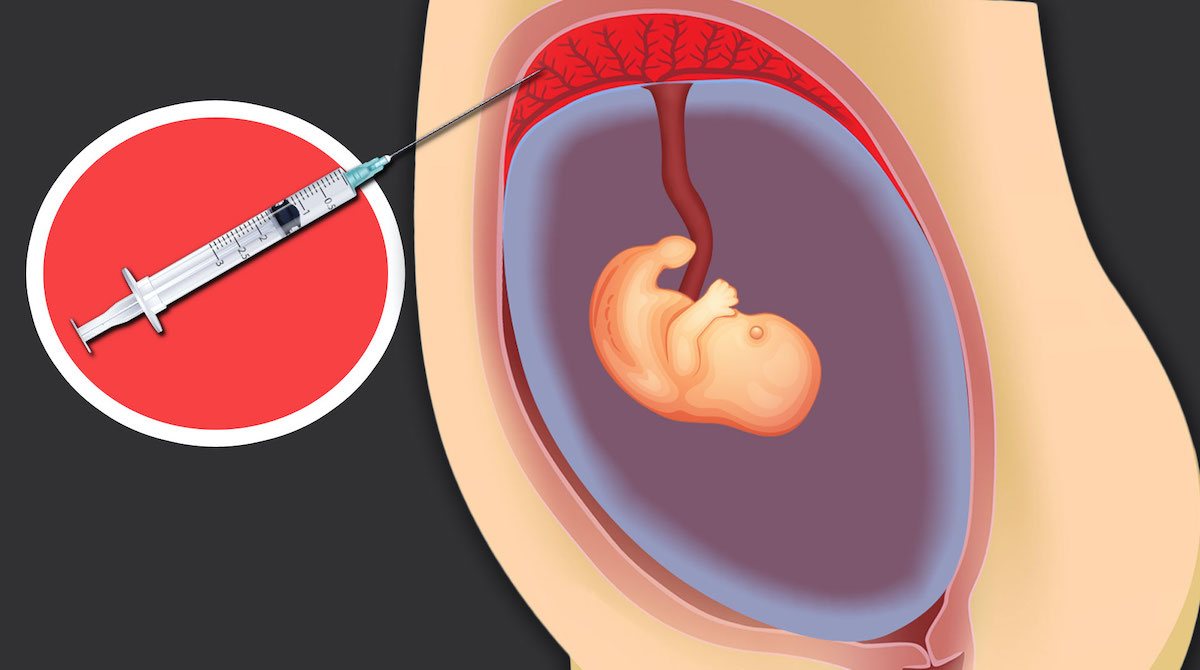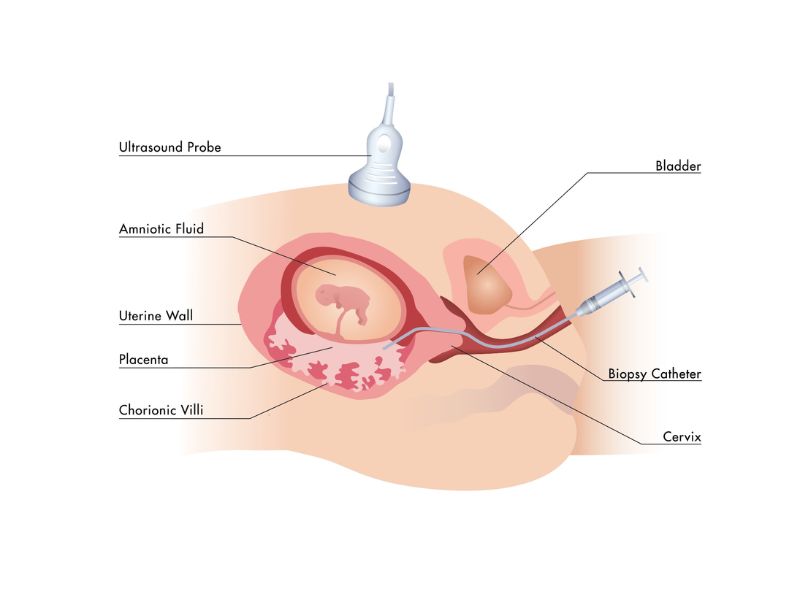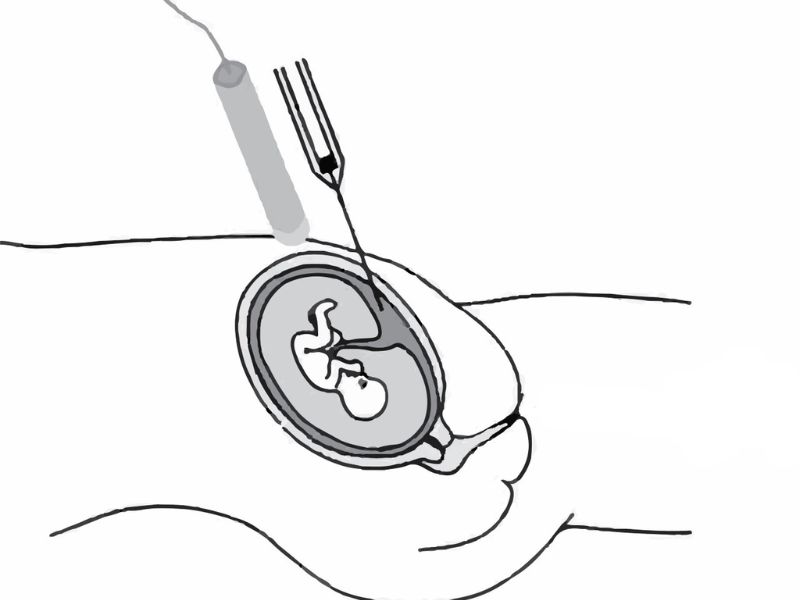
What is a chorionic villus sampling test?
Pregnancy is a sacred and happy journey. However, many pregnant women cannot help but worry about their children’s health. One of the most important issues is the risk of birth defects.
The CVS test (Chorionic Villus Sampling Test) is a prenatal diagnostic test to early detect birth defects in the fetus. This test is performed by taking a small tissue sample from the placenta for genetic analysis.
This article will provide you with detailed information about the CVS test, including the procedure, advantages and disadvantages, costs, when it should be performed, and answers to frequently asked questions.
What is a chorionic villus sampling test?
Define:
Chorionic villus sampling (CVS) is a medical procedure performed to obtain a sample of cells from amniotic fluid, part of the fetal lumen. The purpose of this test is to check for genetic problems in the fetus.

Target:
When you have the test, you can check for genetic changes in cancer cells. From there, doctors will evaluate to detect genetic problems such as Down syndrome, thalassemia, Tay-Sachs, etc. Nurturing also helps determine the child’s gender.
Operating principle:
During CVS, a small tube is inserted through the vagina or through the mother’s abdominal muscles to reach the desired area of the fetus. A small amount of cells from the amniotic tissue can then be obtained using a suction tube or a nail needle. This cell sample is then sent for genetic testing. This process is usually performed within 10-12 weeks in Thailand.
Procedure for performing the CVS test
Prepare before the test:
Before performing the CVS test, the doctor will conduct a detailed conversation with the mother to explain the procedure, risks, and benefits of the test. The mother may also be advised to have some pre-test tests, including fetal ultrasound, blood tests, and selective tests.

Steps:
- Positioning: The mother will be asked to lie comfortably on her side on an examination table or bed.
- Disinfection: The mother’s abdomen or vagina will be cleaned and disinfected to reduce the risk of infection.
- Insertion of the tube: A thin, flexible tube will be inserted through the vagina or through the abdominal muscles to reach the area of the fetal amniotic scales.
- Sampling: A sample of cells from the amniotic squamous tissue is then taken using a suction tube or a thin needle.
- Completion of the procedure: Once the sample is taken, the procedure will be complete and the mother may be advised to rest for a short period.
Time to receive results:
It typically takes 1-2 weeks to receive the results of a CVS test, although it may take longer to obtain more detailed results. The mother’s doctor or healthcare provider will contact her to communicate the results and discuss any genetic changes that were detected.
Advantages and disadvantages of the CVS test
Advantages of the CVS test:
- Provides results quickly: The test provides results faster than some other tests such as Amniocentesis. From there, mothers can recognize genetic problems earlier.
- Early diagnosis: This test is performed from the 10th to 13th week of pregnancy. From there, you can detect genetic conditions early, help your family prepare mentally and plan for future events.
- High accuracy: The CVS test is highly accurate in detecting genetic variations. From there, the doctor can decide between continuing the pregnancy and intervening early.
Disadvantages of the CVS test:
- Risk of infection: There is a risk of infection when performing a CVS test. Because the doctor will insert the tube through the vagina or abdomen, it can increase the possibility of infection.
- Risk of pregnancy loss: Although rare, there is a small risk of pregnancy loss after a CVS test. Especially mothers who encounter difficult or doubtful cases.
- Does not detect every genetic condition: Although the CVS test is highly accurate, it still cannot detect every type of genetic condition, and some genetic variations can be detected more accurately. using different testing methods.

Cases where a CVS test should be performed include
- Pregnant mothers with fetuses at high risk of birth defects:
CVS is performed when pregnant women have risk factors for birth defects such as advanced age, medical history, or abnormal screening results. In that case, CVS may be recommended to more accurately test for fetal genetic conditions.
- Pregnant mothers with abnormal prenatal screening results:
If screening results such as the AFP (Alpha-Fetoprotein) test or ultrasound test are abnormal, a CVS test must be performed. At that time, the screening results will be more accurate about the genetic status of the fetus.
- Pregnant mothers with a history of fetal birth defects:
In case the pregnant mother has a fetus with previous birth defects, it is also necessary to have CVS performed.
Doctor’s advice for pregnant mothers
- Consult your doctor before deciding to perform the CVS test:
Before deciding to have a CVS test, pregnant mothers should discuss with their doctor. At that time, mothers can clearly understand the process, pros and cons, as well as the risks of testing.
- Prepare mentally and physically before taking the test:
The CVS testing process can cause stress and anxiety for pregnant women. Therefore, pregnant mothers need to find ways to stay mentally comfortable. Mothers can choose activities such as meditation, and yoga or participate in psychological counseling sessions.
- Taking care of fetal health after testing:
After performing the CVS test, pregnant mothers need to follow all doctor’s instructions, ensure adequate rest, and maintain a healthy diet to protect the health of the fetus. If you have any unusual signs or symptoms, contact your doctor immediately.













